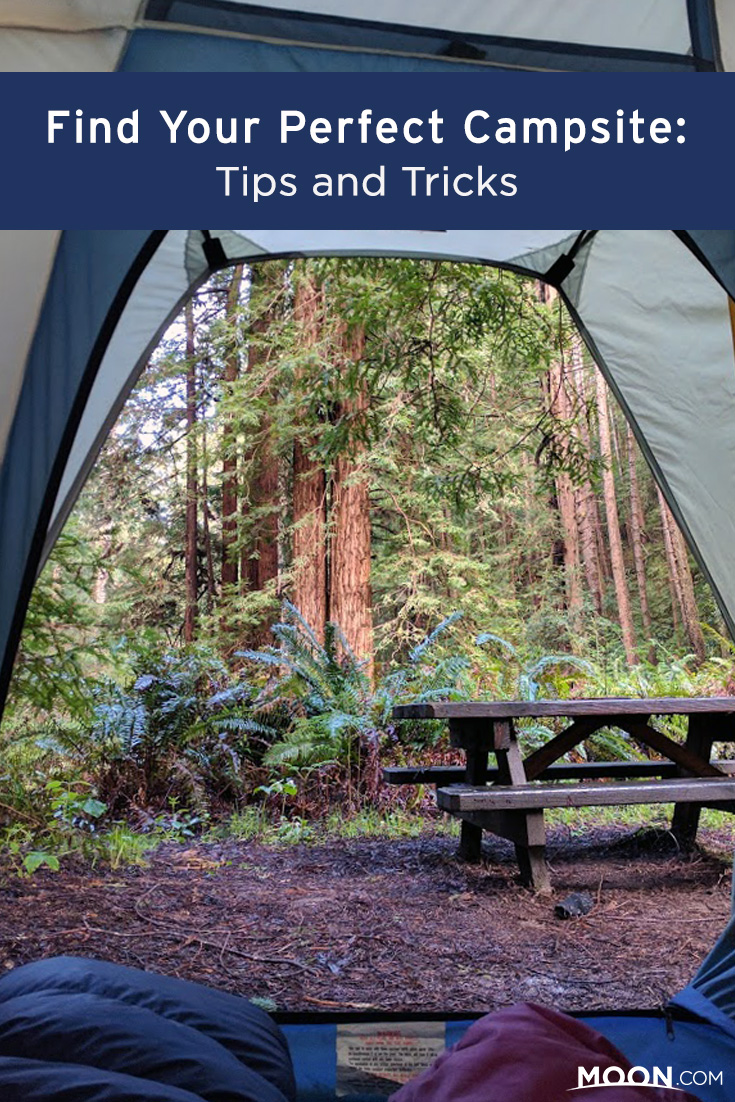Choosing the Perfect Campground For You
Working with the Moon California Camping book this summer has introduced me to hundreds of camping spots in every corner of the Golden State. The plethora of places to pitch a tent is both exciting and slightly overwhelming. With so many options it can be hard to pick the “right” spot, but so far I’ve found that by following my gut and knowing what I want out of a trip, I always end up in the right place.
Choosing the perfect campground is easier than it sounds—expert camper Tom Stienstra claims that “camping is like religion: many paths, one truth.” Every camper is different, so finding the perfect campsite is actually more about finding your perfect campsite. Here are some things to keep in mind as you research sites for your next getaway.
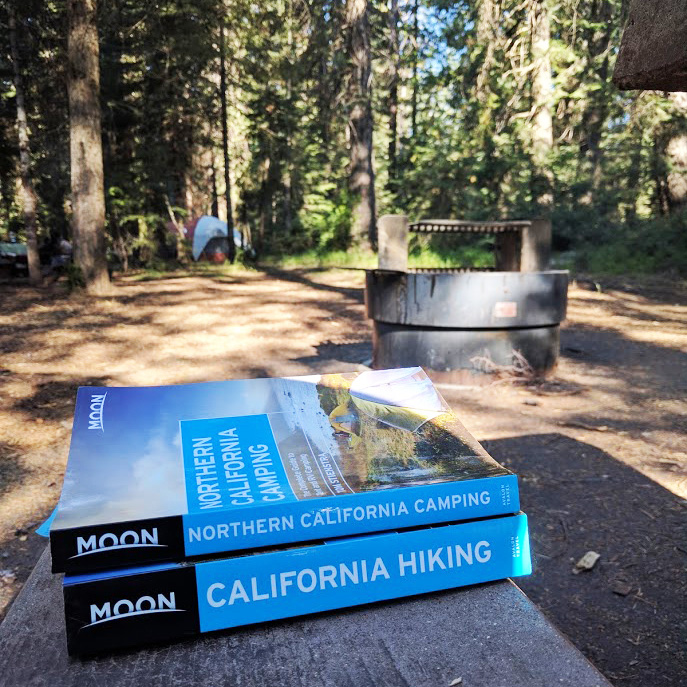
Consider Your Interests
Being drawn to waterfalls and other fun water features, I seek out campgrounds that are on the water or near some sort of aquatic adventure. By honing in on the swimming icons next to the campground listings I discover everything from waterfalls to hot springs. (Note that, if you’re camping by the water, it is probably a good idea to bring bug spray.)
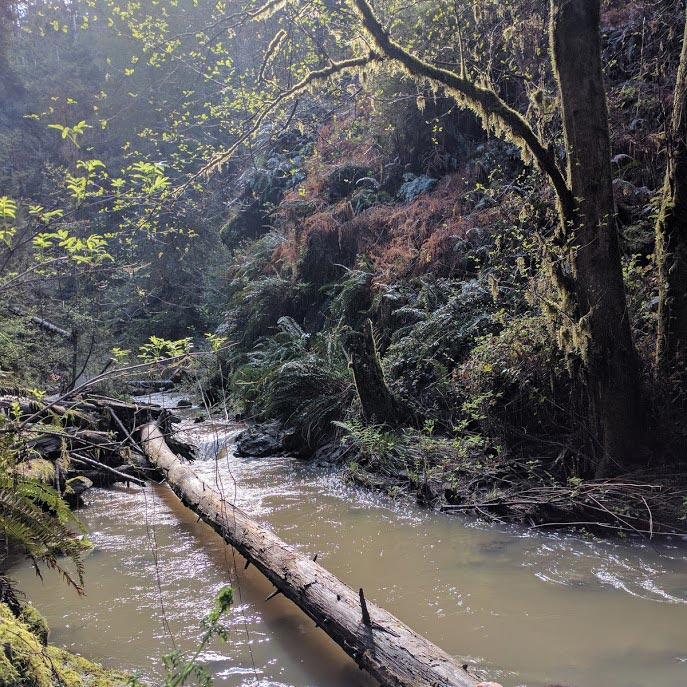
Another way to follow your adventure is to look at Tom’s “Best Of” lists in the beginning of the guidebook, where he compiles the top 10 choices for scenic views, fishing, and hiking (among others). This is a good way to begin your search if you know what you are after—and if you don’t quite have an answer yet, you can never go wrong with the “Best Scenic Campgrounds” list, which covers a range of options while also guaranteeing you a beautiful spot.
Your Must-Haves
Important to consider is what kind of outdoor experience you’re after; if you prefer easy access to amenities (running water, picnic tables, paved roads), then state, county, and national parks may be your best bet. These parks are often more established and tend to have lots of space for kids and pets to run wild and make new friends. On the other hand, if you’re after quiet seclusion off the beaten path, look for Forest Service campgrounds, or tent-only walk-up sites where you can get away from noisy generators and immerse yourself in natural solitude. If you need inspiration, try these secluded campgrounds where less than 5% of campers camp.
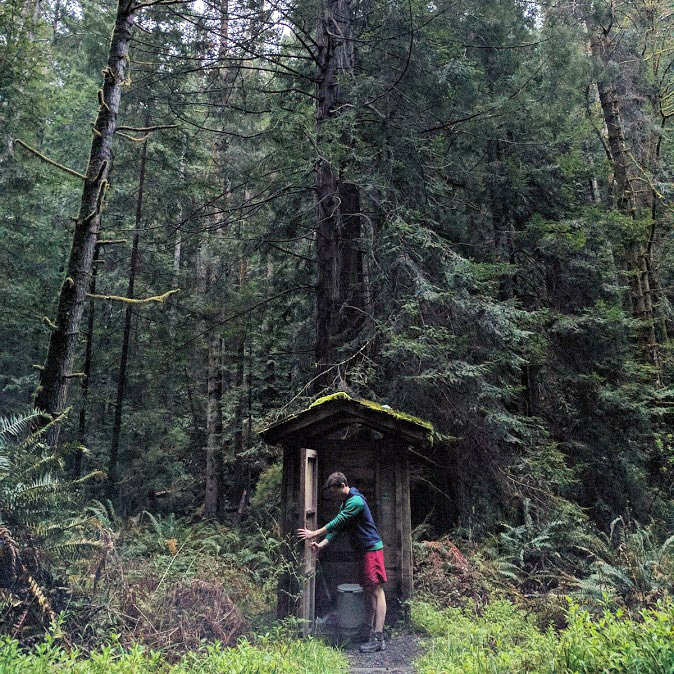
After I’ve made my list and highlighted potential campsites, I always read Tom’s review and consider his scenic ratings. I opt for campsites with higher scenic ratings and rave reviews by Tom, because who doesn’t love waking in the morning immersed in spectacular outdoor beauty?
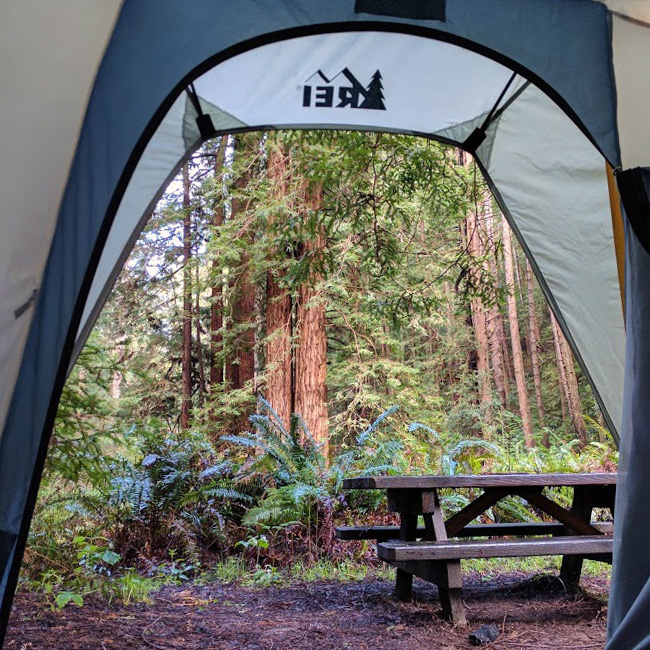
Making the Final Choice
If I am still finding it hard to choose from a small selection of scenic campgrounds, I do a simple Google image search. This usually ends up being the tell-all portion of my research as I tend to get mesmerized by the beauty of a certain spot—and that becomes my campsite. Be sure to look at the campsite reservation page (if you know the exact date of your adventure), as campgrounds tend to fill up in the summer and you may need to reconsider your options! Many campground reservation pages also include pictures of the actual campsites—like a Google image search, this can be an easy way to scope out the contenders. Some things to look for are the amount of shade, the proximity of the sites to one another, and the surrounding scenery. If you’re really lucky, there may even be pictures of specific sites: if you find one that you like, you can often reserve it online.
You will also want to factor in accessibility: if you are leaving after work on a Friday, you may want to seek out campgrounds that are near major highways or on well-paved roads for ease of access. Scrambling to find a campsite when it is dark and people are sleeping isn’t always the best way to start your trip. General location is also important: I often like to plan my trips so there’s, as Tom says, “a great payoff to crown your trip.” You can schedule this so that your base camp is close to something else that excites you, whether it’s a hidden stream or a breathtaking view at the top of a hiking trail.
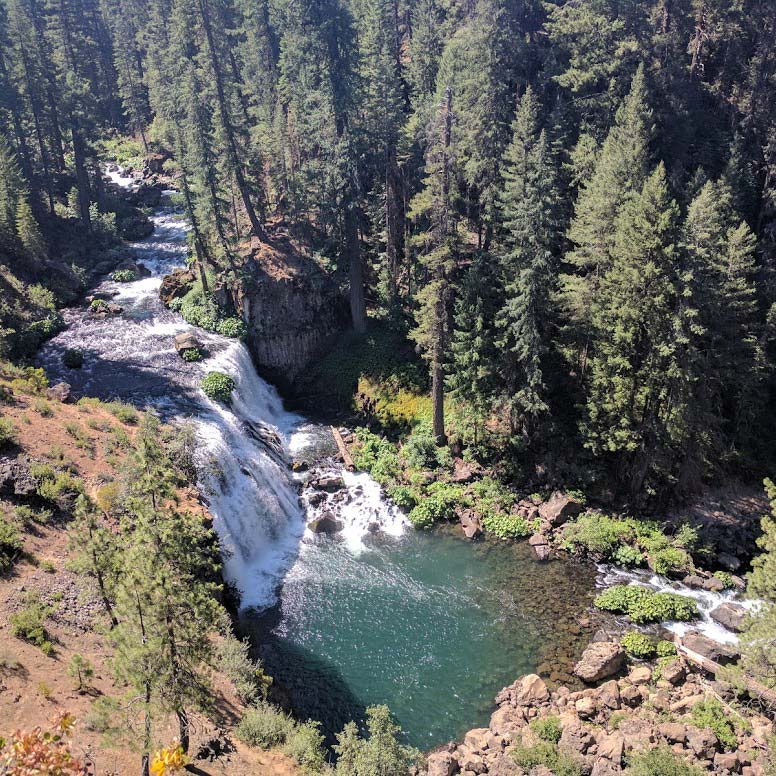
After being seduced by pictures of Burney Falls, I did some clicking around Google Maps and ended up finding many nearby scenic options, thus turning my Burney Falls trip into a three-day waterfall tour extravaganza. I ended up visiting Burney Falls, hiking Cinder Cone, floating on Butte Lake, and gasping at the beauty of each of the McCloud Falls (Upper, Middle, and Lower)! If you have a few spots of interest within the area, you can pack your days full of adventure and get the most out of your time. If you prefer camping trips filled with good books and sunny naps, you may opt for a more remote setting that gives you a scenic and relaxing experience in and of itself.
Setting up Camp
Once you’ve chosen your campground, it’s time to actually camp! Once you arrive at the site, here are some things to keep in mind:
- When you’ve found a good spot for your tent, don’t forget to look up! Note the arc of the sun, and determine where it will set and where it will rise. With this in mind, you can pitch your tent at an angle that’s best suited to your preferences: either for morning shade or a blast of bright sunshine to wake you up the natural way.
- Clear the spot of any big twigs, rocks, or otherwise intrusive objects that could leave you bruised and unhappy.
- Ground cloths or tarps are important—throw one under your tent so that you stay dry.
- Consider the weather forecast (if you have access to it). If rain is expected, try and find high ground. (I made the mistake of opting for a very scenic, but very low, campground in Oregon and awoke in the middle of the night to pouring rain and a lake in and around my sleeping bag.)
- If you can’t find a flat spot for your tent, make sure you position your head on the uphill side.
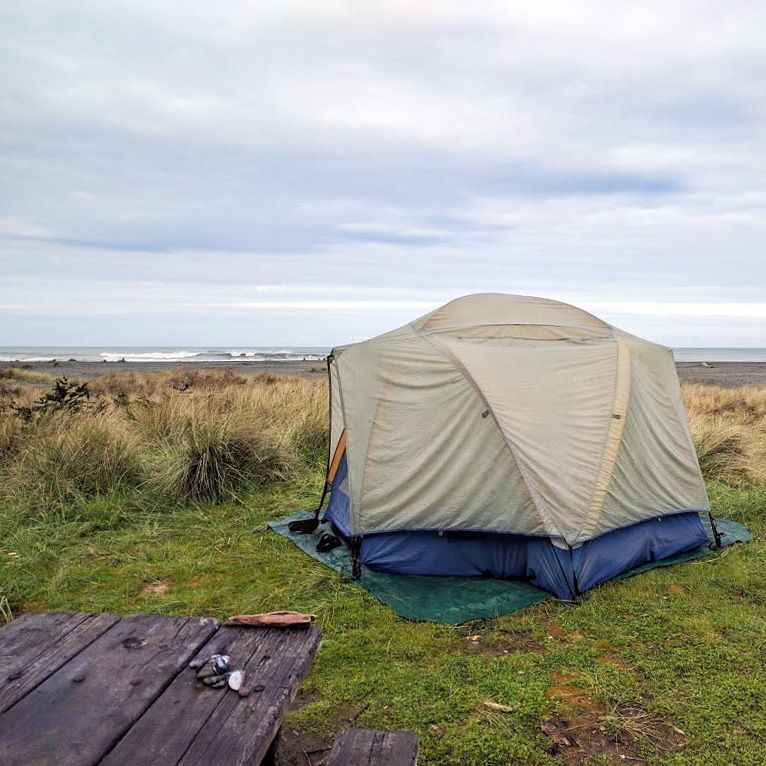
Consider these last words from Tom Stienstra, and let Moon help you choose your next adventure!
“Once you answer the question “What sets you free?” your mission becomes “This is the year I start doing it.” Don’t put your life on hold for anything. Make this the year where you start having the fun you deserve – and let Moon California Camping be the portal to a new life.”
Related Travel Guides
Pin For Later
